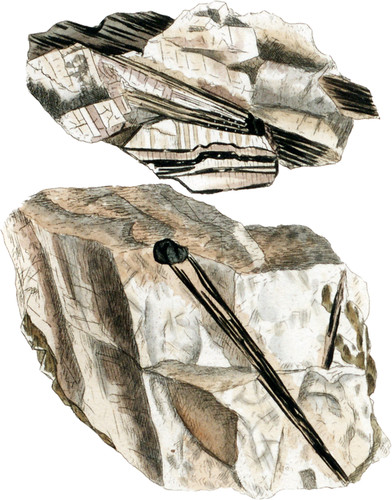 Enlarge
Enlarge
Exotic Mineralogy
Orthite
- Syn. Orthite.
- Berzelius in Afhand. i fysik, &c.
- see Thomson’s Annals, ix. 160.
The only account at present published in England of the Orthite is that above quoted, where the followinganalysis is given:
| Silica | 32.00 |
| Lime | 7.84 |
| Alumina | 14.80 |
| Protoxide of Cerium | 19.50 |
| Protxide of Iron | 12.44 |
| Protoxide of Manganese | 3.44 |
| Yttria | 3.44 |
| Water | 5.36 |
| 98.82 |
Before the blow-pipe it loses its blackness, and is fused with a slight ebullition; it is hard enough to scratch glass, but yields to the knife, producing a light brown powder.
Berzelius and Gahn discovered it in 1816, when examining the neighbourhood of Fahlun, in Sweden, in a vein of Granite that traverses Gneiss, and in which the mine of Finbo is situated.
“At Kararfvet, situated on the opposite side of Fahlun, there is another vein of Granite, which contains crystallized Gadolinites, some Yttro-tantalites, and a variety of Orthite, which has the curious property of taking fire before the flame of the blow-pipe, and of continuing to burn for some moments. It has received the name of Pyrorthite: besides the same constituents as the other Orthite, it contains 25 per cent, of carbon.”—(Thompson’s Annals.)
I am indebted to the freedom with which novelties are communicated from the British Museum, for early figures of this new mineral: the specimens were sent by Prof. Berzelius himself.
The lower figure represents the Pyrorthite from Kararfvet.

